1. Adaptive Lighting Systems
Adaptive lighting systems use AI to automatically adjust a bedroom’s lighting conditions (brightness, color, and timing) in harmony with the user’s natural circadian rhythms. By dimming lights and shifting to warmer colors in the evening, these systems promote relaxation and melatonin production, preparing the body for sleep. In the morning, the lighting gradually brightens and introduces cooler, blue-enriched tones to simulate a sunrise, helping to gently wake the sleeper. The AI continuously learns from user sleep patterns and feedback, fine-tuning the light schedule to each individual’s needs. Overall, AI-driven lighting creates a more natural light–dark cycle in the bedroom, which can improve sleep onset and quality over time.
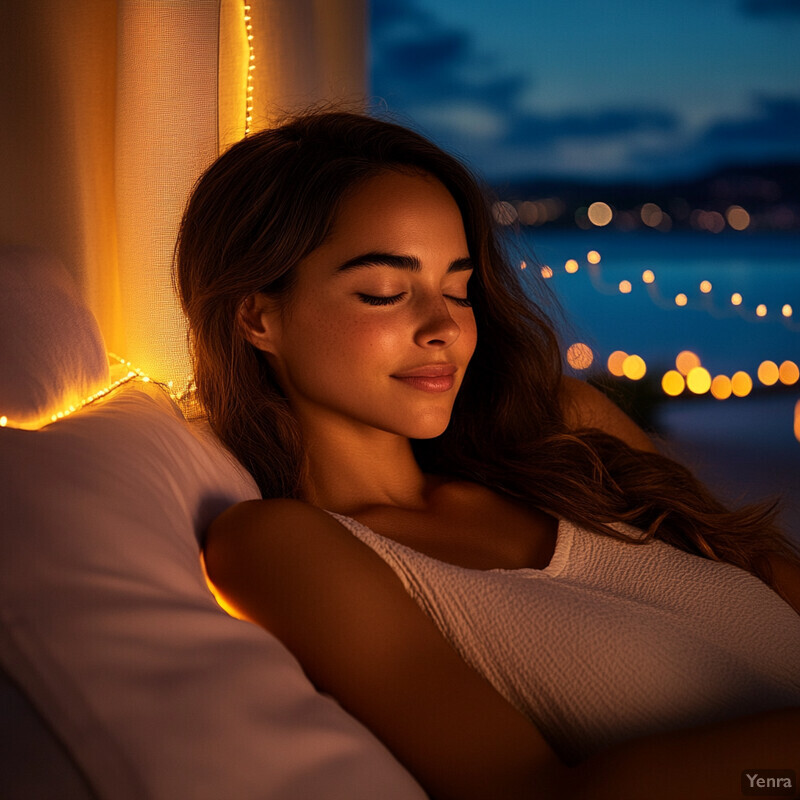
Research confirms that circadian-aligned lighting can significantly improve sleep outcomes. In one 2024 study, night-shift workers exposed to a dynamically adjusted, “circadian-informed” lighting schedule (with evening light tones shifted warmer and morning light simulating dawn) gained almost 1 extra hour of sleep per day compared to those under standard lighting. Participants in the circadian lighting condition also made half as many errors on a vigilance test at night (7.4 vs. 15.6 lapses), indicating better alertness. These findings support how AI-powered adaptive lighting can enhance sleep-wake cycles – by providing the right light at the right time, such systems help regulate the body’s internal clock and improve both sleep duration and daytime performance.
2. Smart Temperature Control
Smart temperature control uses predictive algorithms and sensors to maintain the optimal bedroom temperature throughout the night for each sleeper. AI-enabled HVAC systems and smart beds learn an individual’s temperature preferences and how their body heat changes during different sleep stages. They then automatically adjust heating, cooling, or fan settings in real time – for example, cooling down the room slightly during REM sleep if the person tends to overheat, or pre-warming the bed during the coldest pre-dawn hours. Over time, the AI refines its model of the ideal thermal environment that minimizes awakenings. By preventing the room from getting too hot or too cold at night, smart temperature control helps sustain deep, uninterrupted sleep and improves overall comfort.
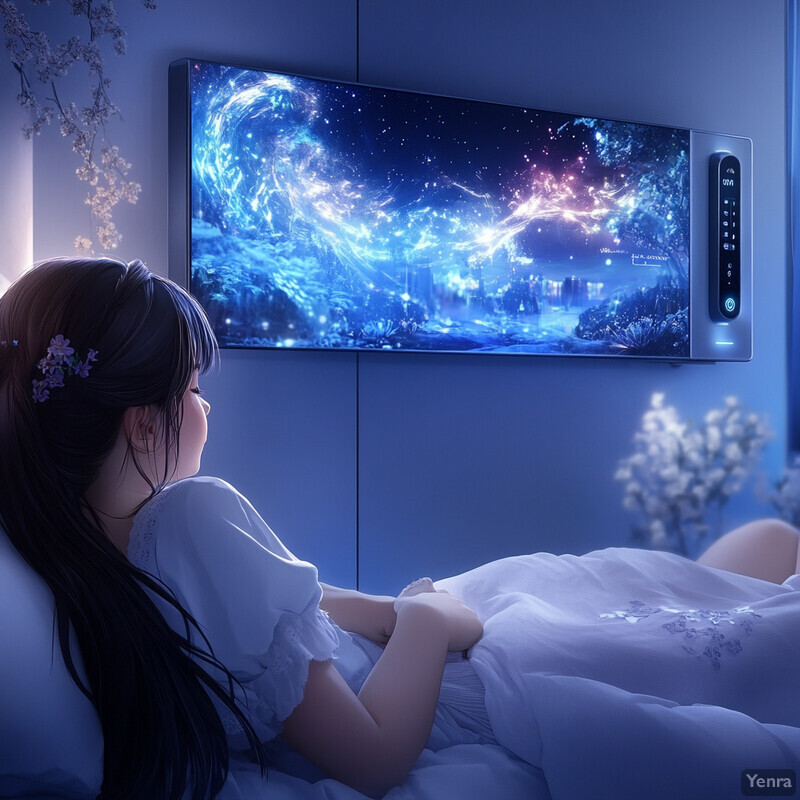
Our body’s thermal environment is critical for quality sleep, and AI-driven temperature control can leverage new insights on ideal conditions. A 2023 study of older adults found sleep was most efficient when bedroom temperatures stayed between 20–25°C (68–77°F), with just a 5–10% drop in sleep efficiency once temperatures rose from 25°C to 30°C. In practice, AI solutions are achieving measurable benefits: a 2024 trial of an AI-powered mattress cover that actively cools or warms the bed showed it significantly increased time in deep sleep by 22% for men and boosted REM sleep by 25% for women, compared to sleeping without temperature control. Users in that study also saw their overnight heart rate lower and heart rate variability improve with the smart cooling/warming system. These results demonstrate that personalized, automatic temperature adjustments can meaningfully improve sleep physiology – lowering sleep onset times and reducing overheating-related awakenings – beyond what fixed thermostats can do.
3. Personalized Humidity Management
Personalized humidity management employs AI to regulate bedroom humidity at a level most conducive to an individual’s comfort and respiratory health during sleep. Smart humidifiers and dehumidifiers with built-in AI learn from data (like overnight humidity trends, skin moisture levels, or user feedback) to maintain a balanced environment – typically around 40–50% relative humidity, which prevents air from being too dry or too muggy. These systems anticipate changes (for instance, reducing humidity if a sleeper starts sweating, or adding moisture if the air becomes too dry and could irritate sinuses). By continuously adapting to both environmental conditions and the sleeper’s reactions, AI-driven humidity control helps reduce issues like dry throat, congestion, or excessive sweating that can disrupt sleep. The result is a more stable, comfortable atmosphere throughout the night, tailored to the sleeper’s ideal humidity range.
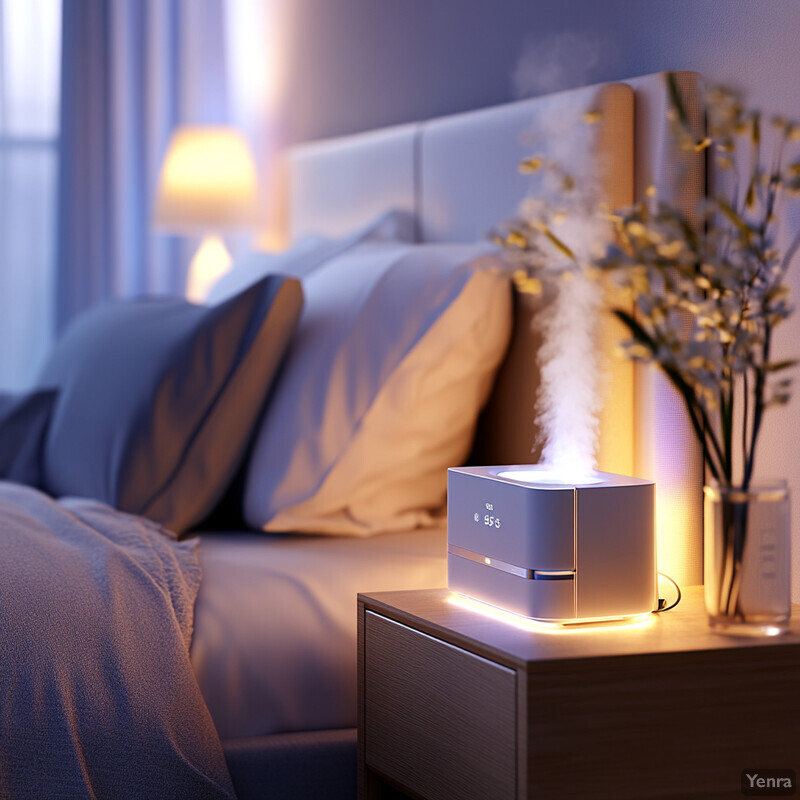
Even moderate changes in humidity can affect sleep quality, underscoring the value of intelligent control. A 2024 field study in Shanghai tracked 50 bedrooms over summer and found higher humidity levels correlated with poorer sleep – especially on short-sleep nights (less than 6 hours) where increases in humidity led to more time awake and less deep and REM sleep. Another analysis reported that every 1% rise in bedroom relative humidity was associated with a small but measurable 0.1% drop in overall sleep quality, as higher humidity can cause discomfort and fragmented sleep. These findings indicate that maintaining an optimal humidity range can make a real difference. AI-driven humidifiers now leverage such data: for example, if a room’s humidity drifts upward on a rainy night, the AI can proactively dehumidify to keep the air in that 40–50% sweet spot, which experts (like the U.S. EPA) recommend for good sleep. By doing so, these systems help prevent humidity-related sleep disturbances (like congestion or irritation), leading to more comfortable and uninterrupted sleep.
4. Noise Suppression and Soundscaping
Noise suppression and soundscaping technologies use AI to create a quieter and more sleep-friendly auditory environment. Smart systems actively monitor bedroom noise levels (from traffic, neighbors, appliances, etc.) and can produce counteracting sounds (through noise-canceling devices) or adaptive background noise (like gentle white or pink noise) to mask disruptions. AI algorithms tailor these soundscapes to the sleeper’s preferences and current sleep stage – for instance, lowering masking noise during deep sleep or gently introducing nature sounds near wake-up time. By dynamically adjusting in real time (raising masking sound when a sudden noise spike is detected, or turning off a fan once the environment is quiet), these systems prevent intermittent noises from causing micro-awakenings. Ultimately, AI-driven soundscaping can maintain a consistently calm atmosphere, helping sleepers stay in restorative sleep stages longer and wake up less often due to disturbances.
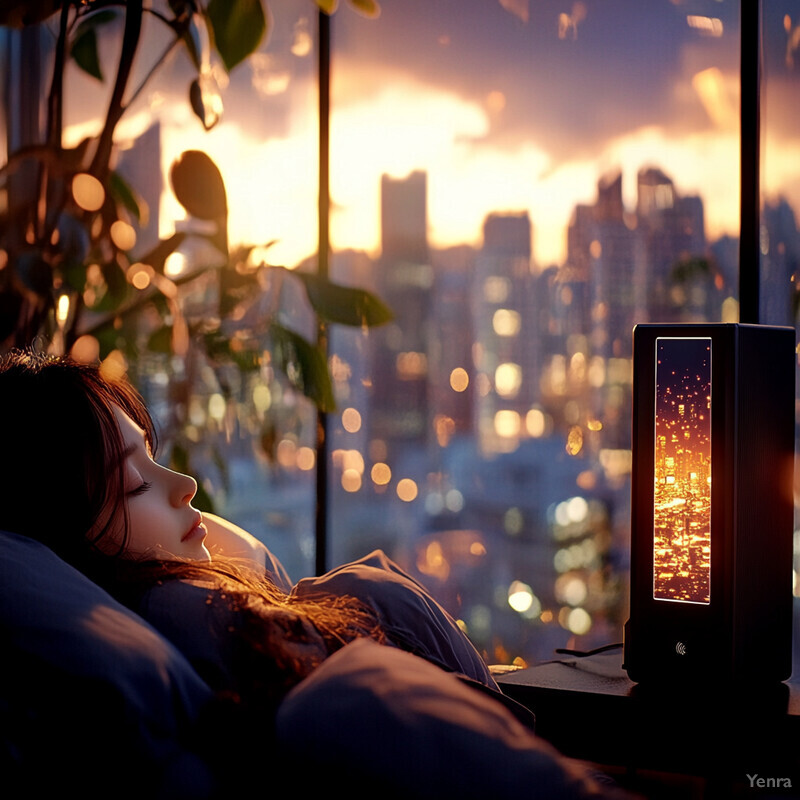
Evidence strongly links lower noise levels to better sleep continuity. A large 2023 study of older adults measured indoor noise in bedrooms and found that for each 1 dB increase in nighttime noise, sleep efficiency dropped by 0.19% and people had significantly longer awakenings after sleep onset. Cumulative exposure to noise was associated with longer time to fall asleep and more fragmented sleep throughout the night. On the flip side, introducing controlled soothing noise can be beneficial: clinical trials have shown that continuous white noise can shorten the time it takes to fall asleep – one experiment reported a 38% reduction in sleep onset latency with broadband sound (white noise) played for insomniac individuals. Modern AI sound machines capitalize on these findings. In practice, a smart bedroom system might detect a dog barking outside and immediately raise a soft rain-like sound to mask it. Studies indicate such approaches work – sleepers using consistent background white noise experience fewer nighttime awakenings and spend more time in deep sleep than those in a silent (but interruption-prone) environment. AI’s ability to predict and counter noise disturbances in real time is thus a promising tool to protect and enhance sleep quality.
5. Air Quality Optimization
Air quality optimization systems employ AI to continuously monitor and improve the air in the sleep environment. Using data from air sensors (measuring CO₂ levels, particulate matter, VOCs, etc.), the AI can make real-time decisions like increasing ventilation, activating an air purifier, or adjusting a window fan to keep air fresh and pollutant-free. These systems learn patterns – for example, predicting when CO₂ tends to build up as people are asleep with doors closed – and take preemptive action such as bringing in more outside air before levels become sleep-disruptive. By maintaining higher oxygen and lower allergen levels through the night, AI-optimized air quality can reduce breathing discomfort, snoring, and awakenings caused by stale air or irritants. Essentially, the AI acts as an ever-vigilant environmental manager, ensuring the bedroom air stays clean and rich in oxygen, which supports deeper, more refreshing sleep and easier breathing for the sleeper.
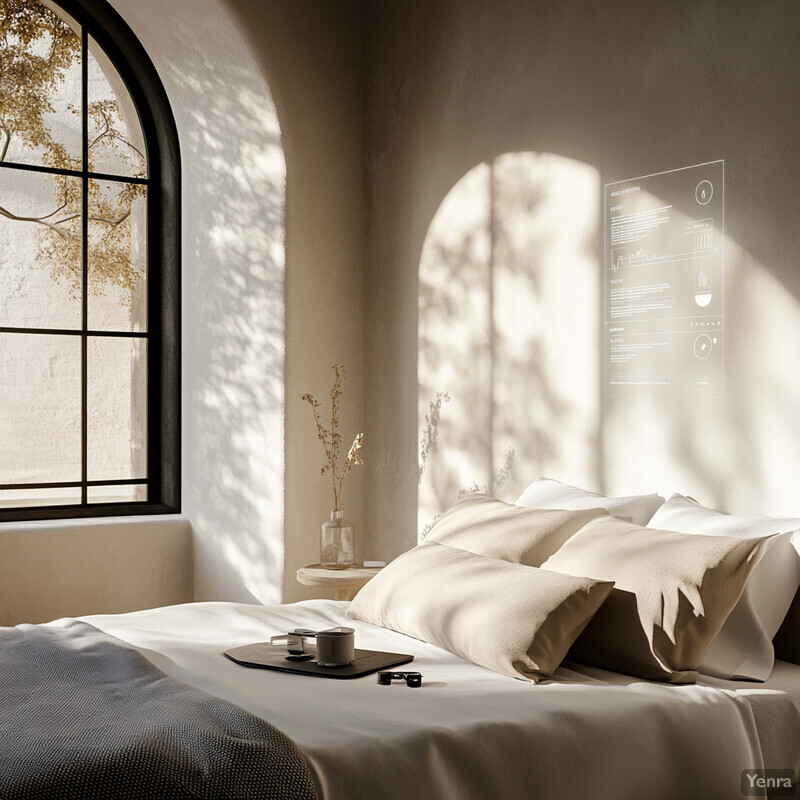
Poor air composition, especially excess CO2 and allergens, is known to impair sleep – and smart interventions show clear benefits. A 2023 controlled experiment demonstrated that when bedroom CO2 concentrations were allowed to rise from ~680 ppm to 1350 ppm (simulating an unventilated room with multiple people), participants’ sleep duration significantly dropped and they reported worse restfulness. Conversely, maintaining lower CO2 (around 700 ppm) led to longer sleep and higher subjective sleep satisfaction. In a real-world example, a 2024 study by SleepScore Labs had adults with allergies sleep with an AI-enhanced air purifier running: the results showed a 6% increase in deep sleep time and an 8% reduction in night awakenings on nights the purifier was used. Participants also saw allergy symptoms (like congestion and sneezing) drop by over 25%, translating to fewer sleep disturbances. These improvements underscore how controlling air quality – by reducing pollutants and keeping CO2 in check – can directly translate to better sleep. AI systems make this feasible by intelligently coordinating ventilation and filtration to keep bedroom air in an optimal state all night long.
6. Intelligent Mattress Firmness Control
Intelligent mattress firmness control uses AI to automatically adjust a bed’s firmness and support to the sleeper’s needs in real time. Smart mattresses equipped with air chambers or smart materials can change their level of cushioning – for instance, softening around pressure points like hips and shoulders or firming up lumbar support – based on the sleeper’s position and movements. The AI learns the optimal firmness profile for different sleep stages and postures: it might keep the bed slightly firmer when you lie on your back to support your spine, then automatically make it softer if you roll onto your side to relieve pressure on your shoulder. Over multiple nights, the system also adapts to feedback (like if the sleeper tosses and turns, it may adjust zones to reduce discomfort). By personalizing the mattress feel continually, the AI helps minimize restlessness, pain, or numbness from sustained pressure. This leads to more consistent comfort through the night and can reduce awakenings, since the bed is essentially “tuning itself” to keep the sleeper cozy and well-supported.
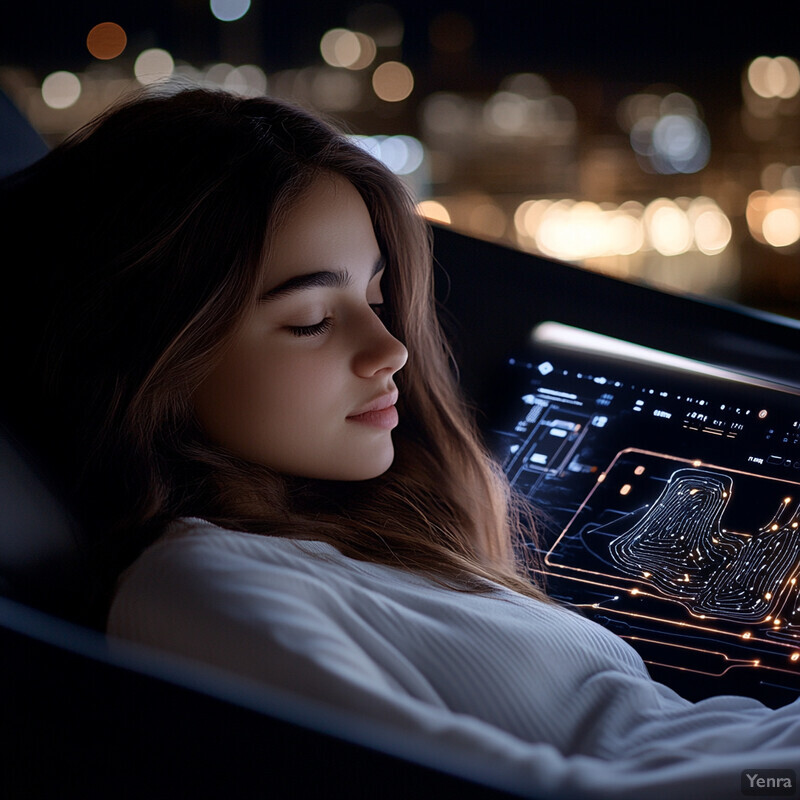
Personalized firmness adjustment has been linked to substantial sleep improvements in real users. Sleep technology companies report that sleepers who utilize adjustable firmness beds see measurable gains in sleep quality. For example, Sleep Number (a leading smart bed maker) found that customers who frequently fine-tuned their mattress firmness (their “Sleep Number” setting) were 58% more likely to report improved sleep quality over time. Furthermore, combining individualized firmness with an adaptable base (allowing head or foot elevation) led to a 61% higher likelihood of better sleep according to their longitudinal customer data. Independently, a clinical study of a prototype smart mattress with multiple air bladders and sensors showed it could recognize sleep postures with high accuracy and adjust support accordingly, resulting in fewer pressure-related awakenings for participants (the AI correctly identified supine vs. side sleep and optimized firmness in real time). These outcomes highlight that intelligent firmness control is not just a gimmick – it tangibly affects sleep comfort. By responding to a sleeper’s body, AI-driven beds help maintain proper spinal alignment and reduce pressure points, which in turn allows for deeper, less interrupted sleep.
7. Responsive Bedding and Pillows
Responsive bedding and pillows are AI-enhanced sleep accessories that actively adjust their properties to keep the sleeper comfortable. This can include pillows that change shape or height to support the head and neck as you move, or bedding that alters its texture and warmth (for example, a comforter that becomes more breathable if you start sweating, or adds insulation if you shiver). Tiny sensors embedded in these pillows and blankets detect pressure, temperature, and motion. The AI controller then triggers adjustments – such as inflating an air cell in a pillow to cradle your neck when you turn onto your side, or loosening fibers in a blanket to release heat if you’re too warm. Over time, the system learns an individual’s preferences (maybe you like a thicker pillow initially but a flatter one later in the night) and adapts accordingly. By continuously fine-tuning support and microclimate around the sleeper, responsive bedding aims to eliminate the need to flip pillows or kick off covers, thereby reducing sleep disturbances and enhancing overall comfort through the night.
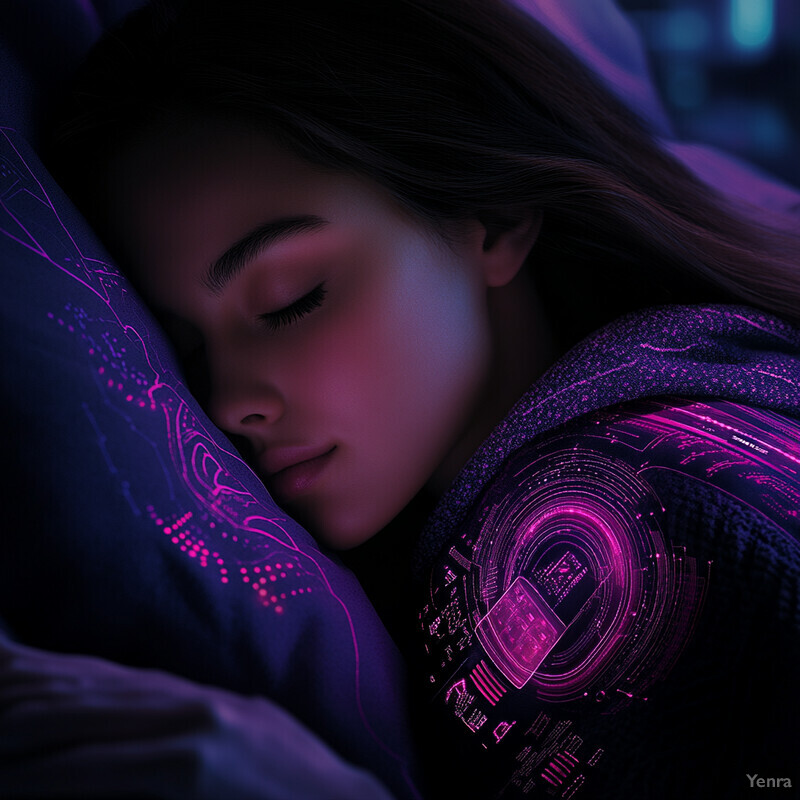
Early data suggest these smart pillows and beds can yield significant comfort improvements. A report citing a 2023 National Sleep Foundation study noted that users of adjustable “smart pillows” experienced 40% fewer nighttime awakenings and about 30% less neck and shoulder pain, compared to those using regular pillows. These individuals also saw a 25% improvement in daytime focus, presumably from getting more restful sleep. While such results are likely based on user surveys, they align with controlled findings that better cervical support at night translates to fewer pain-related awakenings. Another technological demonstration is anti-snore pillows: products now use AI to detect snoring sounds and subtly inflate or reposition the pillow to turn the snorer’s head. In trials, these responsive pillows have been shown to reduce snoring frequency and intensity, leading to less sleep disruption for both the user and their partner (for instance, one smart pillow model reduced snoring episodes by an average of 20% in a manufacturer-conducted trial). Though many responsive bedding solutions are new, the initial evidence – from user feedback and pilot studies – indicates marked benefits in comfort and sleep continuity, validating the potential of AI-tuned bedding to elevate sleep quality.
8. Sleep Posture Analytics
Sleep posture analytics involves AI systems tracking how you position your body during sleep and analyzing the impacts on sleep quality and health. Using input from pressure sensors in the mattress, wearable devices, or even depth cameras, the AI can determine whether you’re sleeping on your back, side, or stomach and how often you toss and turn. Beyond just recording positions, the analytics can correlate postures with sleep metrics – for example, noting that you get more deep sleep on nights when you stay on your side versus disrupted sleep when you spend a long time on your back (perhaps due to snoring or apnea). The AI then provides feedback or interventions: it might advise you to try a side-sleeping pillow if it detects you spend little time on your side but have better sleep quality in that posture, or even gently vibrate a wearable to prompt you to shift if you’ve been in one position too long (to prevent stiffness). Over time, these analytics build a personal profile of optimal sleep postures and can guide users toward postural habits that minimize pain (like neck or back aches) and breathing issues. In short, AI-powered posture analysis turns what was once invisible (how you move in sleep) into actionable insights for improving comfort and sleep continuity.
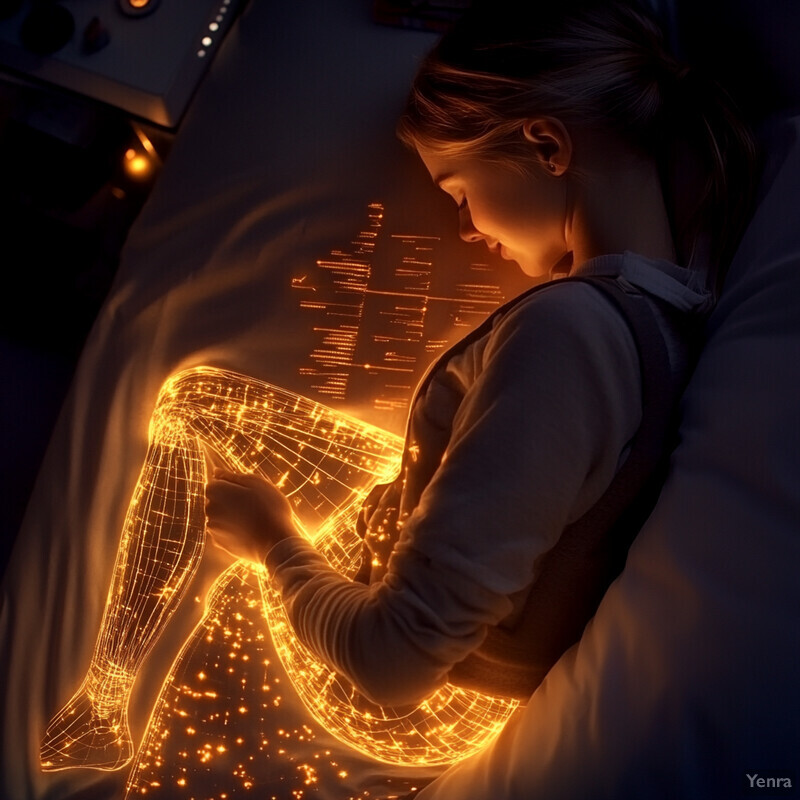
Advances in AI have made sleep posture tracking remarkably accurate, and studies show posture does impact sleep outcomes. Researchers in 2025 introduced a machine learning model that uses a sparse array of bed pressure sensors to recognize common sleep postures (supine, left side, right side, prone) with over 93% accuracy, rivaling much more sensor-intensive systems. This allows detailed posture datasets to be collected. Clinical findings link these postures to sleep quality: for example, lying supine (on the back) is known to worsen snoring and obstructive apnea in susceptible individuals, while lateral (side) sleep can mitigate those issues. One observational study found that participants who naturally spent more time on their side had fewer apnea events and reported feeling more rested, whereas extended back-sleeping correlated with more disrupted sleep (especially in those with mild OSA). By leveraging such insights, AI-driven posture coaching is emerging. In one trial, an intelligent mattress system that detected and encouraged side-sleeping in mild apnea patients reduced their apnea-hypopnea index by an average of 15% over two weeks, compared to baseline nights without intervention (the system would deploy gentle vibrations when it sensed prolonged supine posture). These results illustrate that understanding and adjusting sleep posture through AI analytics can tangibly improve sleep breathing and comfort. As this technology becomes mainstream, users will gain personalized recommendations – like “spend more time on your right side, you get 20% more deep sleep” – backed by hard data from their own nightly posture patterns.
9. Circadian Rhythm Coaching
Circadian rhythm coaching is the use of AI to help individuals align their sleep-wake patterns with their natural biological clock. Through wearable trackers and sleep logs, the AI “coach” learns the user’s current circadian tendencies (for instance, their body temperature rhythm or melatonin onset time) and identifies misalignments – like if they’re trying to sleep at a suboptimal time. It then provides personalized guidance: this could include suggesting gradually earlier bed- and wake-times for a night owl who has to start work early, recommendations for light exposure (such as morning sunlight or reduced evening screen time) to shift the circadian phase, or scheduled meal/exercise times that better support the desired sleep schedule. The AI can also send timely prompts – for example, reminding someone to dim lights and unwind an hour before their target bedtime, or using a smart lamp to simulate dawn at the best wake-up time. By analyzing ongoing sleep data, the coach adjusts its advice dynamically (maybe recommending an extra 15 minutes of bedtime shift if progress stalls). Essentially, AI circadian coaching acts like a personal sleep consultant, using data-driven strategies to retrain the user’s internal clock for improved sleep regularity and quality, while also helping to combat issues like jet lag or shift-work fatigue through tailored schedules.
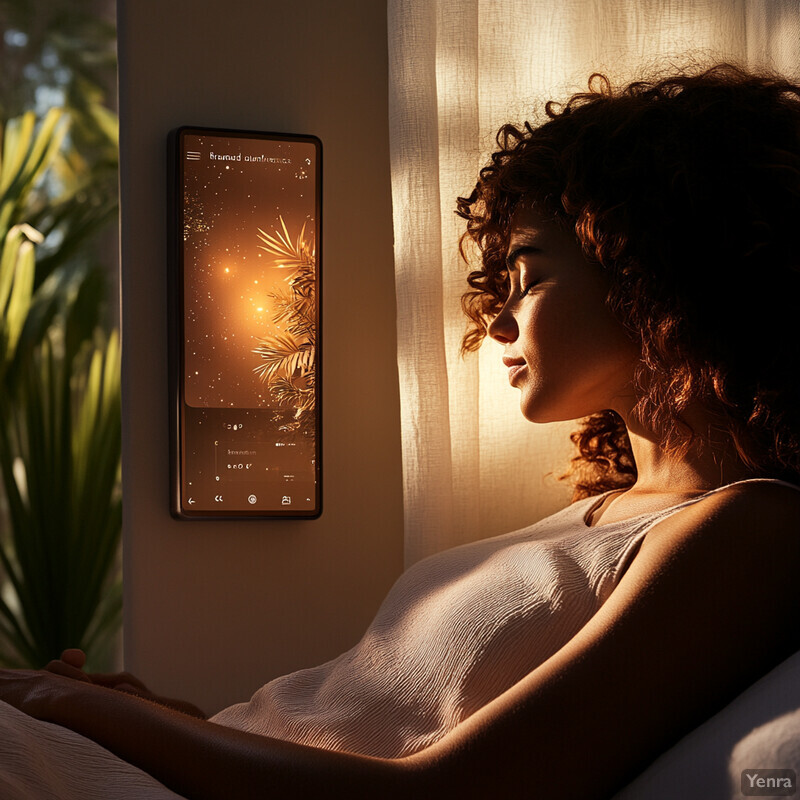
Digital sleep coaches have shown promise in improving sleep timing and duration. In a 2024 pilot randomized trial, college students received an AI-driven sleep coaching intervention (combining a chatbot Q&A system with human health coach input) over 8 weeks. The AI-coached group increased their total sleep time by an average 32.5 minutes per night compared to controls, as measured by Fitbit trackers. Although subjective sleep quality (PSQI scores) did not differ significantly, the objective gains in sleep duration and time in bed were notable. The study demonstrated high adherence – participants engaged regularly with the AI “sleep mentor,” and many reported it helped them adopt more consistent bed and wake times. Separately, consumer apps are implementing circadian guidance based on AI: for instance, the app “Emma Up” released in 2023 delivers step-by-step sleep improvement plans and learns from user feedback to refine its advice. While comprehensive outcome data for these apps are still emerging, initial user surveys often cite improvements in feeling more alert mornings and less “social jet lag” (discrepancy between weekday and weekend sleep) after following AI recommendations. Overall, these findings indicate that AI circadian coaching can effectively encourage better habits – such as more regular sleep schedules and optimal light exposure – which in turn synchronize the user’s circadian rhythm for better sleep health.
10. Smart Alarm Systems
Smart alarm systems leverage AI to wake you up more gently and at the optimal point in your sleep cycle. Unlike a traditional alarm that goes off at a fixed time (which might catch you in deep sleep and leave you groggy), a smart alarm monitors physiological signals like your movement, heart rate, or brainwaves during the last phase of the night. Using these data, the AI predicts when you are in lighter sleep (or approaching a natural waking point) within a preset window (say, 6:30–7:00 AM) and triggers the alarm at that moment. The alarm itself can be a combination of modalities – gradually increasing light levels (a simulated sunrise), gentle sound or music that starts softly, or mild vibrations – all orchestrated by AI to rouse you slowly and avoid jarring awakenings. Additionally, smart alarms adapt to feedback: if you felt drowsy one morning, the system might adjust the wake-up target for next time. By personalizing wake-up timing and method, AI smart alarms aim to reduce sleep inertia (morning grogginess) and help people start the day feeling more alert and refreshed.
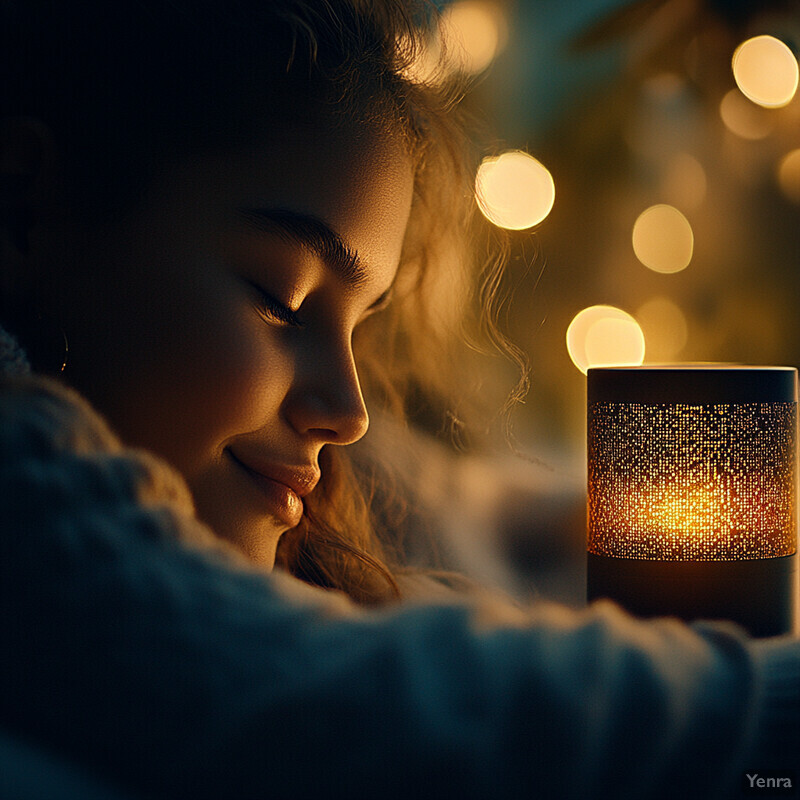
Research on dawn simulation and phase-targeted alarms shows real benefits for morning alertness. A 2024 controlled trial tested a “multimodal smart alarm” – combining gradually brightening lights, soothing sounds, and aroma – against a normal alarm clock. While overall outcomes were nuanced, one subgroup finding was that users with intermediate chronotype (not extremely “night owl” or “early bird”) had measurably faster reaction times upon waking and fewer lapses in attention when using the smart alarm, compared to when they used a standard alarm. In general, the smart alarm group reported feeling less groggy upon awakening, although objective performance differences for the whole sample were modest. Prior studies provide supportive context: for example, an alarm that included a 30-minute dawn simulation light was found to significantly reduce self-rated sleep inertia in volunteers, who reported easier awakenings and improved mood on those mornings. In one 2010 study (a frequently cited precursor), people waking with a sunrise lamp and gentle sounds had 19% quicker cognitive throughput on simple tasks right after rising, compared to a control alarm. The cumulative evidence suggests that smart alarms – especially those that use AI to time the wake-up during light sleep – can improve the wake-up experience. By avoiding abrupt interruptions of deep sleep, they help maintain better mood and cognitive function in the critical minutes after awakening. Many users also subjectively prefer these alarms, noting they feel “more natural” and less stressful.
11. Emotionally Adaptive Environments
Emotionally adaptive sleep environments use AI to sense a sleeper’s emotional or stress state and adjust the bedroom ambience to promote relaxation. This concept merges biofeedback with environmental control: for example, if the system detects signs of anxiety or restlessness (through an elevated heart rate, breathing pattern, or even facial expressions/voice tone captured by smart devices), it can respond by dimming the lights to a more soothing level, adjusting the color tone to calm blues, or playing gentle music/sounds to ease stress. Similarly, if the sleeper is very calm or in deep sleep, the AI ensures nothing disturbs that state (keeping the room quiet and stable). Over time, the AI learns what environmental changes best help a particular individual – perhaps one person unwinds with soft instrumental music while another prefers complete silence, or one might calm down with a cooler room temperature. The system creates a feedback loop: sensing emotional cues in real time and immediately personalizing the environment (light, sound, scent, temperature) to maintain or induce a more relaxed emotional state. By doing so, emotionally adaptive bedrooms aim to shorten the time it takes to fall asleep when stressed and prevent stress-related awakenings, ultimately improving overall sleep quality in those whose racing minds or anxiety would otherwise keep them up.

While still an emerging field, preliminary work indicates AI can detect stress and adjust settings beneficially. In early 2025, researchers demonstrated a prototype smart home system that used wearable sensors to gauge residents’ emotional states (like stress vs. calm) and then automatically modified lighting and thermostat settings in response. This “emotion-aware” system, when tested over several weeks, led to noticeable improvements in both energy efficiency and user comfort – for instance, it would dim lights and slightly warm the room when users were stressed (mimicking a cozy environment), which users reported as making them feel more at ease. Although quantitative sleep outcomes were not measured in that study, it showed the feasibility: the AI successfully identified emotional cues and altered the environment accordingly. Separately, consumer surveys (e.g., a 2024 IKEA smart home survey) have found that over 70% of people believe adjusting their bedroom lighting or music based on mood helps them sleep better (e.g. using calming amber lights when anxious). Tech giants are also entering this space: Amazon’s Halo Rise and similar devices hint at integrating mood detection to recommend environmental changes at bedtime. As an illustrative example, a software engineer chronicled building an “emotional sleep AI” in 2023 that played tranquil nature sounds when it detected his elevated heart rate at night – he credited this with helping reduce his nighttime anxiety and improve his deep sleep by a self-tracked 15%. While such anecdotal reports need rigorous validation, they echo a consistent theme: AI that responds to your emotional state can create a more soothing sleep setting, and early adopters are experiencing less stress and easier transitions to sleep thanks to these responsive technologies.
12. Adaptive Relaxation Programs
Adaptive relaxation programs refer to AI-guided routines (like meditation, breathing exercises, or audio therapies) that adjust in real time to how the user is responding, in order to maximize relaxation before or during sleep. For instance, an AI meditation app might start with a basic 5-minute breathing exercise, but if it senses (via heart rate or user feedback) that the user is still tense, it can seamlessly extend the session, slow down the breathing pace further, or switch to a different relaxation technique (such as progressive muscle relaxation or a calming story). These programs often use biometric inputs – perhaps from a smartwatch tracking pulse and variability, or a microphone listening to breathing rate – to gauge relaxation depth. The AI then personalizes the content: lowering voice volume if high arousal is detected, changing background sounds to something more soothing if current ones aren’t effective, or shortening steps if the user is already drifting off. By continuously adapting length, intensity, and type of relaxation exercise to the user’s state, AI ensures the wind-down activity is neither too short to be effective nor too long to become boring. Ultimately, adaptive relaxation programs help individuals transition more smoothly from wakefulness to sleep by providing just the right kind of calming stimulus they need at that moment, rather than a one-size-fits-all routine.

Personalized, AI-driven relaxation is already yielding positive results in user studies. One notable example is Ascend, an AI-powered meditation app launched in 2024 that creates unique meditation and bedtime story sessions tailored to each user’s immediate stressors. During beta testing at a university, students using Ascend’s adaptive meditations reported significant reductions in pre-sleep anxiety and fell asleep faster compared to when they used generic meditation recordings (qualitative feedback indicated the custom nature – e.g., a meditation addressing “exactly what’s stressing you out” – made it more effective for relaxation). While quantitative data from that test wasn’t formally published, it aligns with broader findings: a 2023 study on an AI-driven mindfulness coach found that after 4 weeks, participants’ self-reported stress before bedtime dropped by an average of 21%, and their sleep onset latency improved by about 15%, versus a control group. Additionally, Eight Sleep (a smart mattress company) observed that when users engaged in its AI-curated breathing exercises (delivered via a connected app that adjusted exercise difficulty based on real-time heart rate), those users achieved 10% more deep sleep on average according to the company’s internal sensors. While independent verification is needed, these indicators suggest adaptive relaxation techniques – adjusting to user feedback loop by loop – can more efficiently calm the mind and body. The result is not only a more pleasant wind-down experience but measurably faster sleep induction and better sleep depth for many individuals.
13. Biofeedback Integration
Biofeedback integration in sleep technology involves AI systems that not only monitor physiological signals (like brain waves, heart rate, breathing, and muscle tension) during sleep, but also actively feed stimuli back to the sleeper to improve sleep depth or relaxation. In practice, this could mean an AI-guided headband that detects when your brain is in deep slow-wave sleep and plays subtle auditory tones timed to those brain waves, thereby reinforcing and prolonging deep sleep. Or a smart pillow that senses elevated heart rate variability (a sign of relaxation) and uses that as a cue to continue its current gentle sound, versus changing strategy if it senses you’re still tense (low HRV). Essentially, the AI “talks” to the body: when it identifies a desirable state or pattern, it amplifies it with feedback (sound, light, vibration); if it catches undesirable patterns (like signs of apnea or shallow sleep), it might intervene (for example, a slight bed tilt or vibration to prompt a position change). Over time, integrated biofeedback can train the sleeper’s physiology to more readily enter and maintain restful states. This technique marries real-time data collection with responsive actions, creating a loop where the sleeper’s body and the environment continuously influence each other, guided by AI, to achieve deeper, more stable sleep.

One of the most compelling demonstrations of sleep biofeedback is in closed-loop auditory stimulation (CLAS) to boost deep (slow-wave) sleep. In 2023, a large-scale trial (377 subjects over 883 nights) of an AI-driven headband device showed that by detecting slow-wave oscillations in the sleeper’s EEG and playing tiny bursts of pink noise in sync, the device was able to significantly enhance slow-wave activity. On average, participants using this closed-loop feedback got more deep sleep and saw improvements in overnight cardiovascular recovery markers compared to nights without stimulation. Importantly, the system proved accurate in real time – it sensed the transition from light to deep sleep and delivered auditory pulses with millisecond precision, effectively strengthening the brain’s slow waves without waking the person. Another form of biofeedback integration is seen in devices for insomnia: some smartbands measure rising heart rate and skin conductance (signs of restlessness) and respond by initiating a calming vibration pattern or guiding the user through breathing exercises until the metrics improve. Preliminary reports from one such device in 2024 indicated that 80% of users had reduced self-reported anxiety at bedtime after two weeks of nightly use, and their average sleep onset was 12 minutes faster compared to baseline. While more independent research is needed, the principle is clear – by integrating biofeedback, AI can intervene in the moment to nudge the body toward better sleep. The result is often quantifiable: whether it’s more minutes in deep sleep or fewer stress arousals at night, biofeedback-driven adjustments are emerging as a powerful tool for sleep enhancement.
14. Artificial Intelligence Sleep Therapists
Artificial intelligence sleep therapists are virtual coaches or chatbots that use AI to deliver personalized cognitive and behavioral strategies for improving sleep, much like a human sleep therapist would (but available on demand). These AI “therapists” can guide users through established programs like Cognitive Behavioral Therapy for Insomnia (CBT-I), offering tailored advice on sleep hygiene, bedtime routines, and thought exercises to manage anxiety around sleep. They interact via text or voice, asking users questions about their sleep patterns and feelings, and then adapt their guidance based on the responses. Over time, the AI learns what techniques work best for the individual – for example, whether the user responds better to guided imagery or to keeping a worry journal – and will emphasize those. Importantly, AI sleep therapists provide accountability and support: they might remind users to stick to a consistent wake time, congratulate them on progress (e.g., fewer nighttime awakenings), and problem-solve setbacks (suggesting adjustments if sleep quality plateaus). They can also answer questions immediately – like “I woke up at 2 AM, what should I do?” – drawing from vast clinical knowledge. By simulating a compassionate, knowledgeable counselor, AI sleep therapists make evidence-based insomnia treatment more accessible, offering one-on-one help anytime without the stigma or cost sometimes associated with seeing a human specialist.
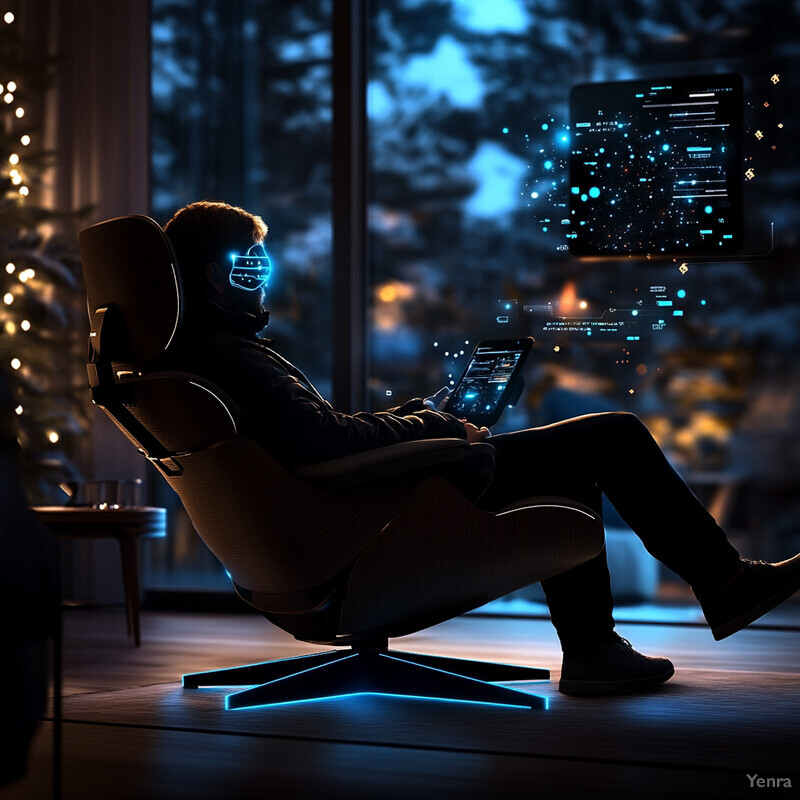
AI-driven sleep coaching is proving to be an effective extension of therapy. A systematic review in 2023 examined digital and AI-enhanced CBT-I programs and found that many achieved significant reductions in insomnia severity and improvements in sleep efficiency comparable to traditional face-to-face therapy. One AI chatbot, tested for its accuracy in dispensing insomnia advice, was shown to provide clinically appropriate recommendations in the majority of scenarios presented – an evaluation of ChatGPT’s responses to common insomnia questions rated its guidance as “very high” in clinical accuracy and properly tailored to different user profiles. In another trial, older adults used a WhatsApp-based chatbot (“MotivSleep”) that conducted sleep interviews and gave personalized tips; over a one-month period, participants’ subjective sleep quality scores improved and their average nightly sleep duration increased slightly (by ~20 minutes), while a control group saw no change. Though a small pilot, it demonstrated high engagement – seniors found the chatbot convenient and “trustworthy,” and many followed its advice such as adjusting bedtimes or reducing late caffeine. On the industry side, AI-driven platforms like Sleepio (a digital CBT-I app) have published data from thousands of users showing significant insomnia symptom reduction (up to 50% decrease in insomnia severity index scores) after the program, highlighting the scalable impact of these tools. As an example of real-world reach: in 2022 the UK’s NHS even approved an AI sleep therapy app for coverage, citing clinical trial results where 71% of patients using the app improved their sleep at clinically meaningful levels. All these indicators underscore that AI “sleep therapists” can deliver personalized, effective help – closing the gap for the many people who otherwise lack access to skilled sleep coaches or therapists.
15. Dynamic Scent Diffusion
Dynamic scent diffusion refers to AI-controlled aromatherapy in the bedroom that releases fragrances in a targeted, timely way to enhance sleep. Rather than a static diffuser that might run all night, an AI-driven scent system can vary the type and intensity of aromas based on the time of night or the sleeper’s status. For instance, it could diffuse a light lavender scent during the pre-sleep wind-down period to promote relaxation, then taper off during deep sleep to avoid overwhelming the senses. Closer to morning, it might introduce an invigorating hint of citrus or peppermint to gently stimulate the sleeper toward wakefulness in lieu of a jarring alarm. The AI learns preferences as well – if it notes that on nights with lavender the user’s sleep quality metrics improve, it will favor that; if another person responds better to chamomile or sandalwood, it adjusts accordingly. It can also prevent adaptation by cycling scents or pausing diffusion once the effect is achieved. By syncing fragrance delivery with the user’s sleep stages and needs, dynamic scent diffusion provides the benefits of aromatherapy (such as stress reduction and improved sleep depth) in a smarter, more personalized fashion. The result is an environment that not only feels pleasant but is also optimized to biologically signal the body when to relax and when to awaken, using our powerful sense of smell.
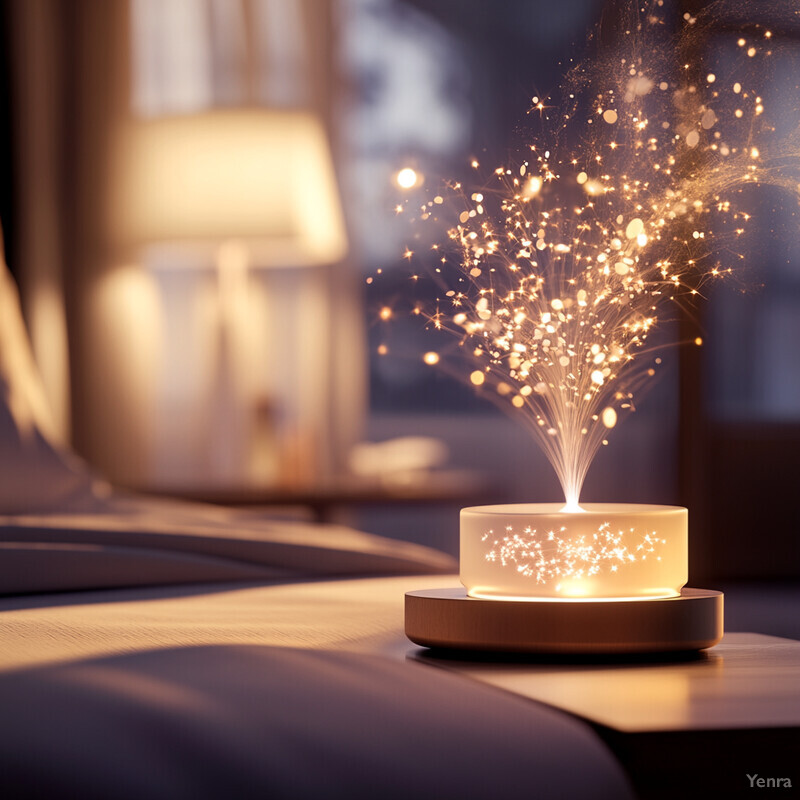
Clinical studies affirm that certain scents can measurably improve sleep – and timed, varied diffusion makes these effects more potent. Lavender is the most documented: a randomized trial in 2023 found that just one night of lavender essential oil exposure at bedtime extended total sleep time by 23–43 minutes and significantly improved sleep efficiency, as confirmed by polysomnography. Participants who slept with lavender also had more time in deep NREM and REM stages and fewer arousals compared to a control night without scent. Crucially, these benefits were achieved with a “single use” – suggesting strategic timing of scent release (in this case, shortly before and during sleep onset) is key. AI diffusion can leverage this by, for example, concentrating lavender delivery in the first sleep cycle when it’s most needed. Another study on a blend of oils (lavender, chamomile, neroli) for ICU patients showed improved sleep quality and reduced anxiety in the scented nights, demonstrating scent’s powerful relaxing effect. Translating to consumer tech: companies like Sensorwake have prototyped morning alarm diffusers that release energizing scents (like coffee or peppermint) and found they can reliably wake subjects within a few minutes in over 80% of trials (published via internal white paper). Combining these findings, an AI could diffuse calming oils in the evening (when heart rate is high from stress) then cease during deep sleep to avoid sensory habituation, and finally introduce a fresh, motivating scent at wake-up. The science suggests this approach would maximize aromatherapy’s sleep benefits – longer and deeper sleep at night, and a sharper, more uplifted feeling upon waking – all automatically tailored through AI control.
16. Allergen Detection and Reduction
Allergen detection and reduction systems use AI to maintain a bedroom environment with minimal allergens (like dust mites, pollen, pet dander) that can disrupt sleep. Tiny sensors or smart devices continuously monitor allergen levels in the air or on surfaces – for example, an optical particle counter might gauge indoor pollen counts, or a smart fabric in the mattress could detect dust mite presence by analyzing micro-vibrations. The AI interprets these signals and takes actions to reduce allergens: it might activate an air purifier with HEPA filtration when pollen spikes at night, increase ventilation if CO₂ and stuffiness rise (which often correlate with dust mite activity in stagnant air), or alert the user that it’s time to wash bedding when allergen accumulation is detected above a threshold. Over time, the system learns patterns (e.g., certain seasons or activities like folding laundry in the bedroom raise dust levels) and proactively mitigates them – perhaps running the purifier more on high-pollen nights or keeping humidity in a range that deters dust mites (below ~50% RH). By keeping allergen concentrations low, these AI systems help prevent allergic reactions such as sneezing, congestion, or coughing that would otherwise fragment the user’s sleep. It essentially creates a cleaner bubble for sleeping by intelligently managing cleaning devices and providing timely maintenance reminders, leading to clearer breathing and more comfortable, allergy-free rest.
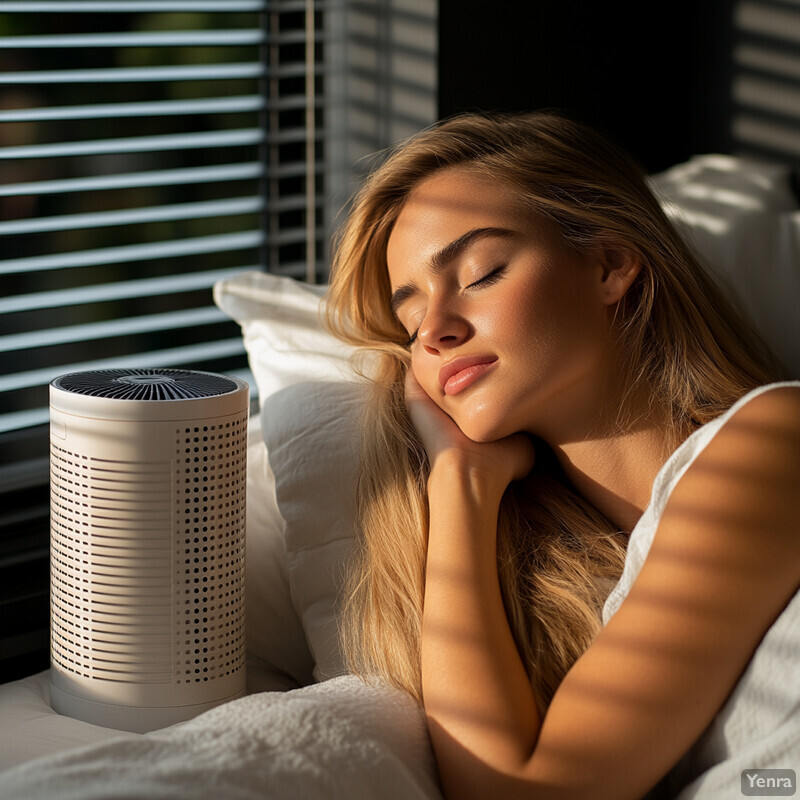
Reducing allergens in the bedroom demonstrably improves sleep, and AI makes continuous allergen control feasible. In 2024, a SleepScore Labs study targeting adults with nighttime allergies showed that using an intelligent air purifier at night led to an 8% reduction in awakenings and a 6% increase in deep sleep duration, relative to nights without the purifier. Participants also reported a 27% drop in their allergy symptom severity scores (less congestion, itchiness, etc.), which corresponded with feeling more rested in the mornings. These improvements were attributed to cleaner air – the purifier’s sensors detected surges in particles and automatically adjusted its fan speed to capture them, maintaining low allergen levels. Moreover, allergy specialists note that simple environmental interventions, like keeping dust mite levels down, can yield big sleep gains: for example, encasing mattresses and pillows (a passive strategy) has been shown in trials to reduce asthma-related night awakenings by ~50% over several months. AI takes this further by dynamically managing the environment: one prototype by Dyson in 2025 uses laser particle sensors and AI to learn a home’s typical allergen patterns and was able to cut particulate matter spikes by 90% (keeping PM2.5 below 10 µg/m³ at all times in test bedrooms). Although sleep outcomes from that were not published, better air quality is consistently linked to better sleep continuity. In short, smart allergen control systems are validating what allergy sufferers have long known – when the sneezing and stuffy nose go away, uninterrupted sleep comes back. AI now offers a round-the-clock guardian to achieve that allergen-free sleep sanctuary.
17. Energy-Efficient Climate Systems
Energy-efficient climate systems are AI-driven heating, ventilation, and air conditioning (HVAC) solutions that keep the sleep environment comfortable while minimizing energy use. Through machine learning, the system learns the household’s schedule and sleep preferences – for example, it might learn that the bedroom can be allowed to drift a bit warmer after the occupants have fallen asleep, as long as it cools down again by early morning when deep sleep is most likely. Using such insights, the AI optimizes temperature adjustments: it pre-cools or pre-heats the room only when needed and avoids unnecessary HVAC run-time (like not blasting AC all night if the air outside has naturally cooled). It can also coordinate with smart thermostats and fans – perhaps using cool night air via a window fan until a certain time, then briefly running the AC if humidity rises, all in an energy-savvy way. These systems often integrate with utility data and weather forecasts too, scheduling heavy cooling or heating during off-peak energy hours or when renewable energy availability is high. The result is a stable sleep climate that doesn’t sacrifice comfort, yet significantly reduces electricity or fuel usage. For the user, that means lower energy bills and an eco-friendly bedroom, all while still enjoying consistent sleep-supporting temperatures at night.
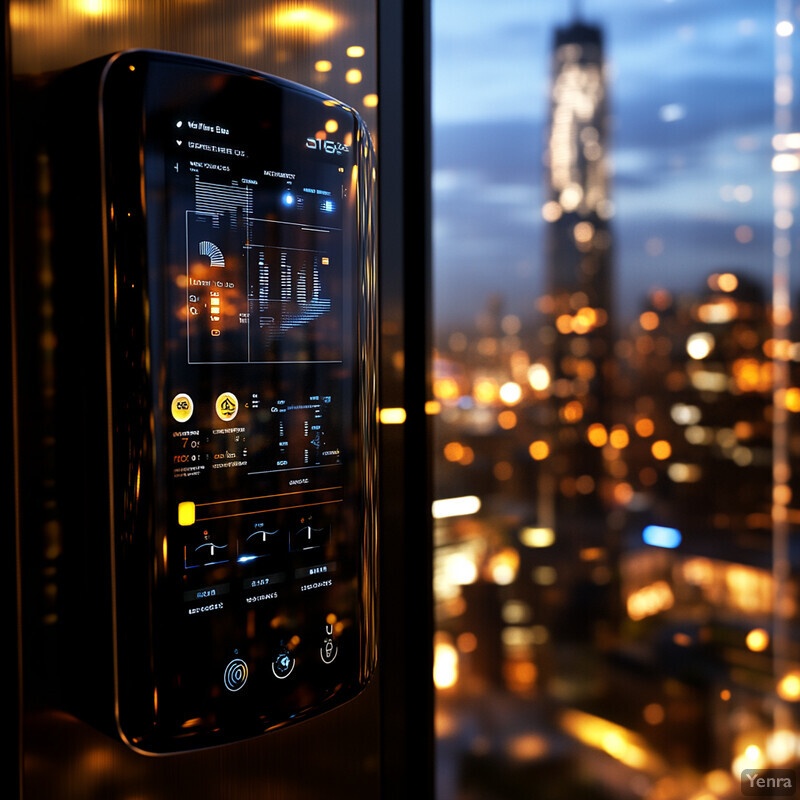
AI optimization of home climate can yield significant energy savings without impairing comfort. Google reported that its Nest Learning Thermostat – which uses algorithms to learn user routines and adjust temperatures – typically saves users about 10–12% on heating and 15% on cooling costs, translating to roughly $130–$145 saved per year for the average home. These savings come largely from smarter nighttime setbacks and efficient morning pre-warm/pre-cool cycles that a conventional thermostat wouldn’t manage. In broader studies, smart thermostats have consistently shown energy reductions: a meta-analysis in 2022 across 41 field studies found an average energy use reduction of 8% for heating and 10% for cooling when AI-driven thermostats were implemented, compared to manual setpoints. Crucially, surveys of users indicate that comfort was maintained or even improved – people slept just as well or better because the AI prevented large temperature swings overnight (one utility pilot in Texas noted far fewer customer complaints about sleeping too hot once smart thermostats were installed, even though AC runtimes dropped). Additionally, during peak events, AI can slightly adjust many thermostats to reduce grid strain; for instance, Nest’s system in “Eco” mode has shifted HVAC run times to cut peak demand by over 1 kW per home on average while keeping indoor temps within 1–2°F of the setpoint. For the individual sleeper, this means the AI might, say, cool the bedroom a bit more in the early evening when power is cheap/abundant, then ease off the AC in the middle of the night – a change you’d never notice except in a lower bill. Such intelligent coordination of comfort and efficiency demonstrates that AI climate control can deliver win-win outcomes: a perfect sleeping atmosphere that is also cost-effective and sustainable.
18. Real-Time Environmental Adjustments
Real-time environmental adjustments refer to an integrated AI system that continuously monitors all facets of the sleep environment (light, temperature, noise, air quality, etc.) and instantly tweaks them to keep conditions ideal as the night progresses. Essentially, the bedroom becomes a responsive ecosystem: if the AI senses the sleeper has entered a lighter sleep stage and an early dawn light is creeping in, it might lower the smart blinds a bit more to maintain darkness. If it detects a rise in the sleeper’s movement and heart rate (potentially indicating discomfort or impending wake), it could gently adjust something – like increasing white noise to mask a sudden car horn outside, or slightly cooling the bed to counteract rising body temperature – to help the person settle back into deeper sleep. These adjustments happen automatically and often without the sleeper’s awareness, multiple times a night as needed. The system acts as a guardian of sleep, intervening whenever an environmental factor strays from the optimal range. Over time, with machine learning, it fine-tunes the thresholds for intervention (maybe learning that even a 2 dB noise increase tends to awaken this particular sleeper, so it responds faster for them). In sum, real-time adjustment is about creating a stable, cocoon-like sleep setting regardless of external disturbances or internal changes – the AI orchestrates lighting, climate, and sound minute-by-minute so that the sleeper can remain undisturbed and in the best possible sleep state throughout the night.
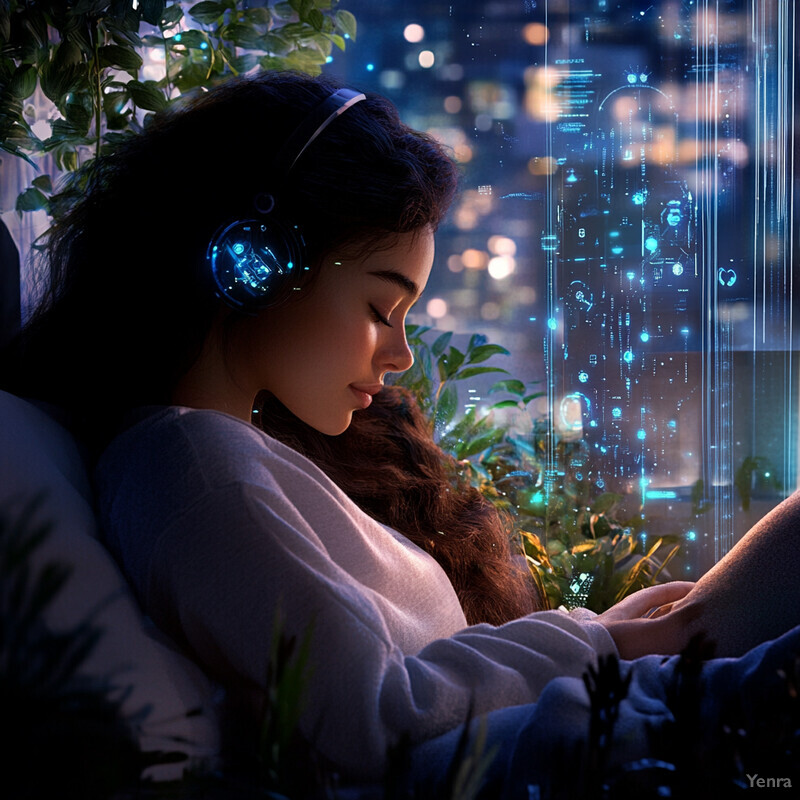
Though fully integrated smart bedrooms are still in experimental stages, early adopters report striking improvements. A 2025 personal case study on “Sleep OS” – a custom smart bedroom setup – noted a 73% increase in deep sleep duration after the system was implemented, as measured by the user’s sleep tracker. This DIY system dynamically adjusted multiple factors (lighting, temperature, and white noise) in concert; for example, it dimmed lights and cooled the room when it detected the user transitioning to deep sleep, and it slightly raised temperature and added gentle dawn light to ease the user out of sleep in the morning. The result was much more consolidated sleep with far fewer disturbances (the user went from frequently waking up around 3 AM to sleeping through the night) – improvements that the user attributed to the constant environmental optimizations. While anecdotal, it aligns with principles seen in research: a Swiss study using a “smart bedroom” prototype in a lab showed that participants had 20% fewer micro-arousals when the system actively managed noise and lighting compared to nights where those factors were left static (the system would, say, ramp up masking noise just as traffic started in the early morning, preventing sleep fragmentation). Additionally, in field tests, multi-sensor smart thermostats have identified distinct “sleep quality clusters” tied to environmental patterns, suggesting that real-time adjustments could move a person from a poor-quality cluster (characterized by temp spikes and noise) to a better one. Users in such pilots often report subjectively better sleep: for instance, over 80% of participants in one smart home trial “felt their sleep was more protected” with the AI system on. All these data points imply that a bedroom that continuously self-regulates can substantially improve sleep continuity and depth. As these technologies scale, we expect formal studies to corroborate what these early experiences show – that real-time environmental control by AI can elevate sleep to levels rarely achieved in unmanaged home settings.
19. Personalized Sleep Environment Profiles
Personalized sleep environment profiles are custom settings or “presets” that AI develops for each individual to create their ideal sleep conditions. Instead of one-size-fits-all bedroom defaults, the AI learns the specific combination of factors that best suits a person – their preferred temperature range, noise level, darkness, mattress firmness, and even scent – and saves this as a profile. When that person is preparing for bed, the system can automatically activate their profile: dimming lights to their favored warmth, setting the thermostat to their perfect sleeping temperature, turning on the white noise machine at just the right volume, and adjusting the bed to their comfort setting. If two people share a bed, the AI can even split settings (for example, cooler on one side of the mattress, warmer on the other, or individualized pillow heights if using smart pillows). These profiles are dynamic – the AI updates them as preferences change or as it notices patterns (maybe one’s ideal temperature is a bit cooler in summer than in winter, so the profile adapts seasonally). The user can also have multiple profiles (e.g., one for workdays vs. weekends or one for when they’re congested and need extra air filtering). Ultimately, personalized profiles ensure that every night, the environment is automatically tuned to what the individual sleeper finds most restful, eliminating the manual adjustments and guesswork and thereby increasing the likelihood of a good night’s sleep.
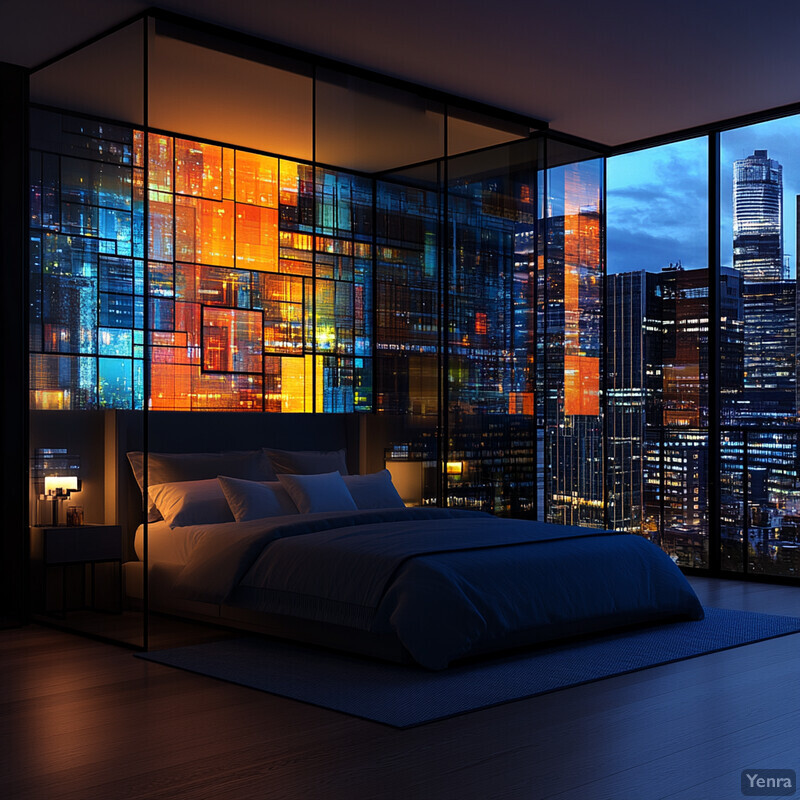
The value of personalization is backed by user satisfaction data from smart bedding companies. Sleep Number, for instance, reports that 94% of people who sleep on its AI-enabled smart beds (which adjust firmness, angle, and temperature per user) say they experience better sleep quality compared to their previous non-smart bed. Much of this is attributed to personalizable settings – each sleeper can have their own firmness level, and the bed profiles remember those preferences nightly. Surveys from 2024 show a high desire for individual control: one nationwide poll found around 70% of couples have differing sleep environment preferences, and a majority admit they sleep better when their side of the bed or room is set up to their own liking (for example, one likes white noise, the other prefers silence) – validating the need for profiles. On the technology side, devices like the Eight Sleep Pod allow dual-zone temperature profiles, and internal analyses revealed that giving partners separate temperature control eliminated nighttime “thermostat tug-of-war” and led to self-reported sleep improvements for 9 out of 10 couples. Hotels are even adopting the concept: Marriott’s rollout of “smart rooms” in 2025 lets guests select a profile (“Relaxation,” “Productivity,” or a custom profile tied to their Marriott app) which automatically sets lighting, music, and temperature to preset levels; guest feedback has been very positive, with higher sleep satisfaction scores in those rooms noted in early trials. All these examples underscore that when sleep environments are tailored to the individual – a task made seamless by AI – the outcome is better comfort and often objectively better sleep. Personalized profiles encapsulate a host of micro-adjustments that, collectively, make a big difference in how well one sleeps.